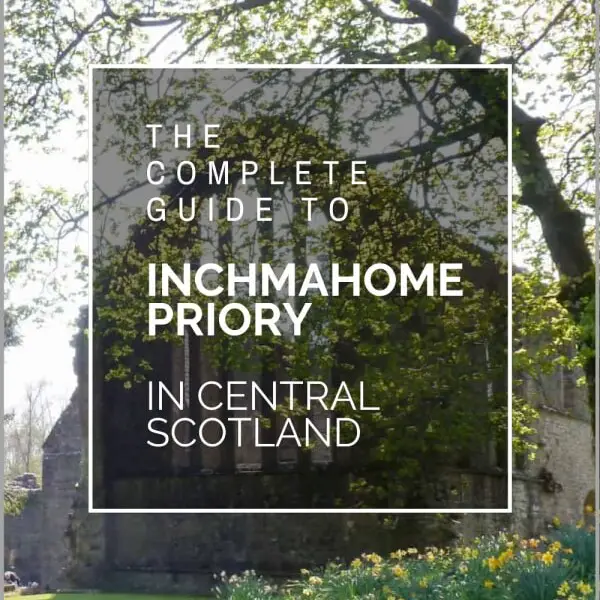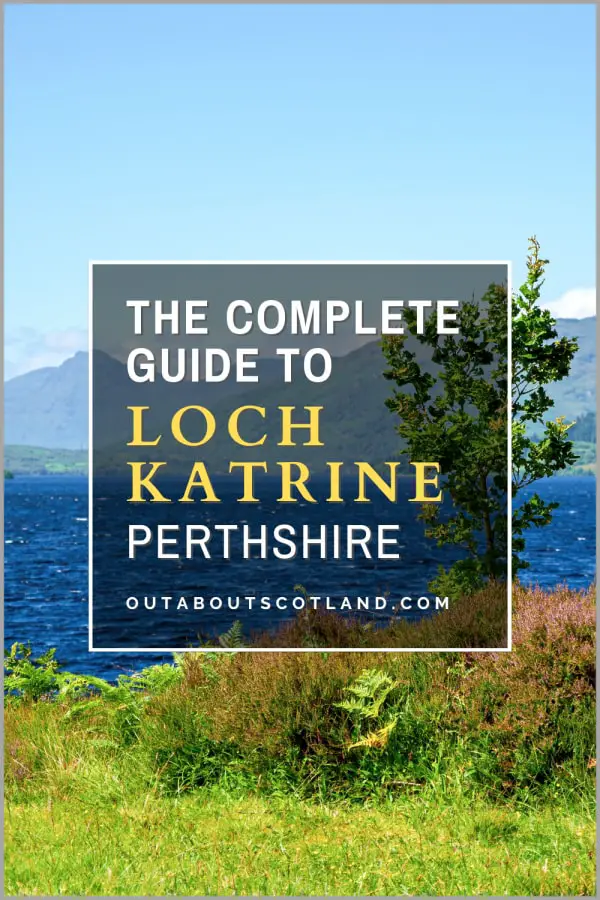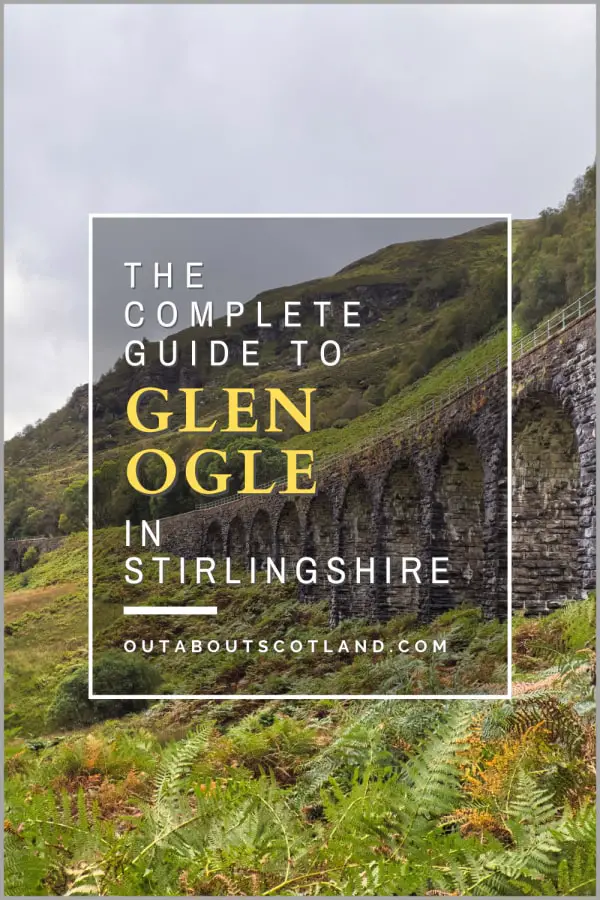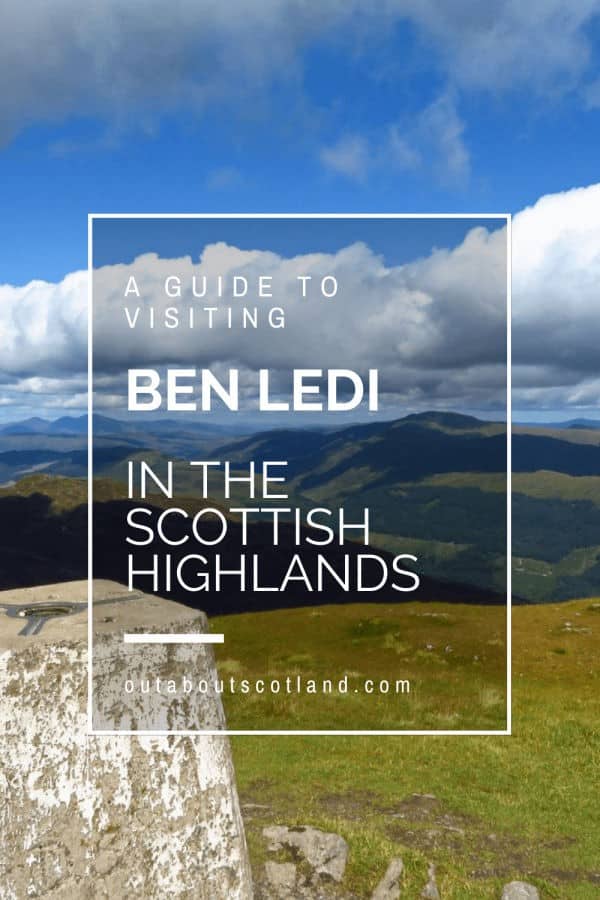Inchmahome Priory is a beautiful historical site in Stirlingshire, located on the largest of three islands in the Lake of Menteith. Founded around 1238 by Walter Comyn, it served as an Augustinian monastery, and its secluded location made it a perfect sanctuary for notable figures like Mary Queen of Scots, who found refuge there in 1547.
Historic Environment Scotland is currently in charge of managing Inchmahome Priory which is accessible to the general public from March to September. Visitors can take a short boat ride to the island and explore the tranquil ruins of the priory, including the chapter house, the cloister, and the dormitory.
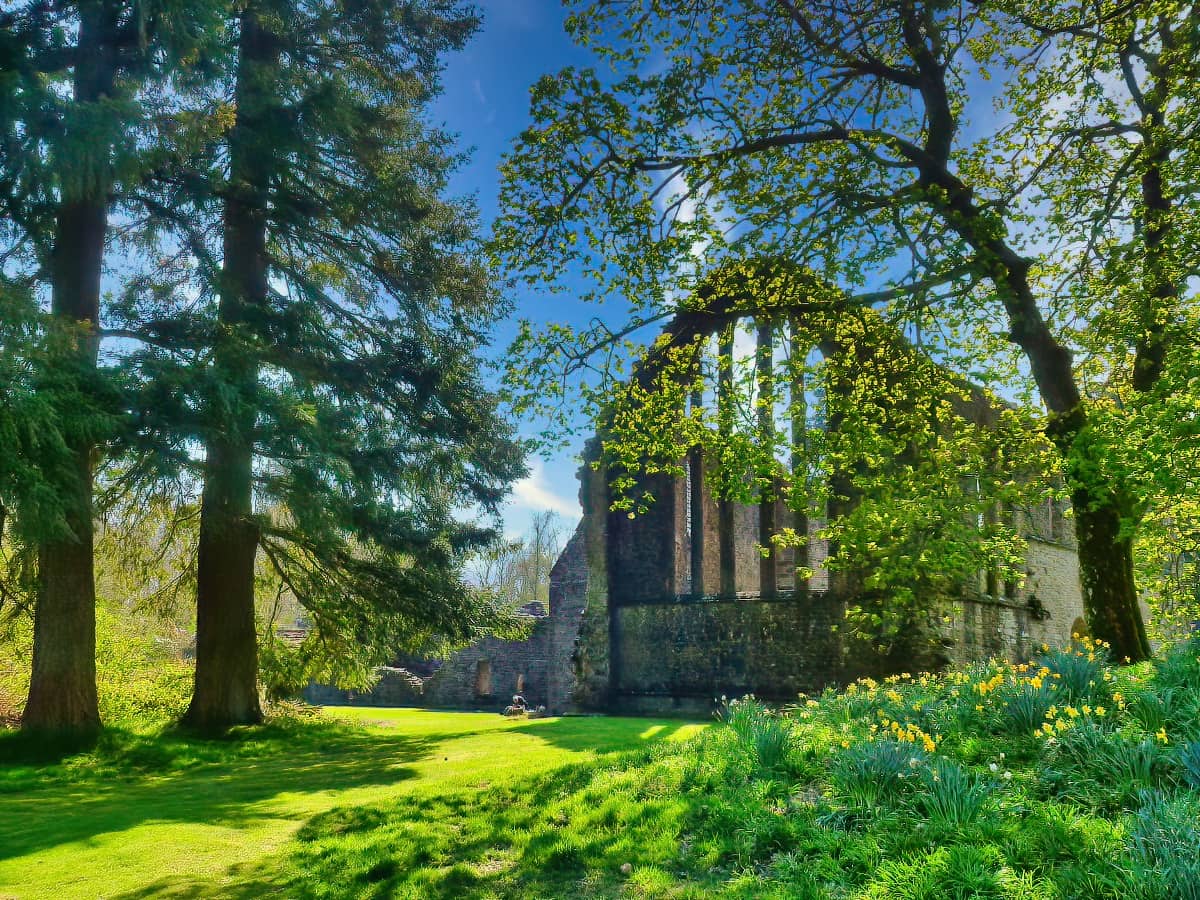
| Address: | Boatshed, Port of Menteith, By Kippen, Stirling, FK8 3RA |
| Opening Hours: | Open 1 April - 30 Sept, Daily 10 am to last outward sailing at 4.15 pm |
| Admission Price: | Adult £9 Child £5.40 Concessions £7.20 |
| Parking: | Free on-site car park |
| Contact: | 01877 385294 |
| Facilities: | Gift shop, toilets, picnic area, drinks machine |
| Photos: | YouTube Video |
Overview
Inchmahome Priory is located on the largest of three islands on the Lake of Menteith, one of the few bodies of water in Scotland that are referred to as a lake instead of a loch. Although the priory is now in ruin, it was once home to a community of Augustinian monks, and over the course of 300 years, it has served as a sanctuary for many Scots, including two of the nation’s most famous historical figures, Robert the Bruce and Mary Queen of Scots.
A visit to the island is accomplished via the ferry boats that regularly sail out of the Port of Menteith (a small village located on the banks of the lake), and once on Inchmahome, you can explore this very pretty and quiet location to your heart’s content.
While the old buildings of the priory are partially collapsed, it’s still an impressive place to wander around and I can only imagine what a peaceful life those yesteryear monks must have had, although it probably wouldn’t have been quite so enjoyable in winter due to its isolation. At least the monks could have enjoyed a wintry game on the shallow lake if they’d wanted; it’s been known to freeze up to 20cm thick, and even in these days of global warming, it still freezes over enough to walk on.
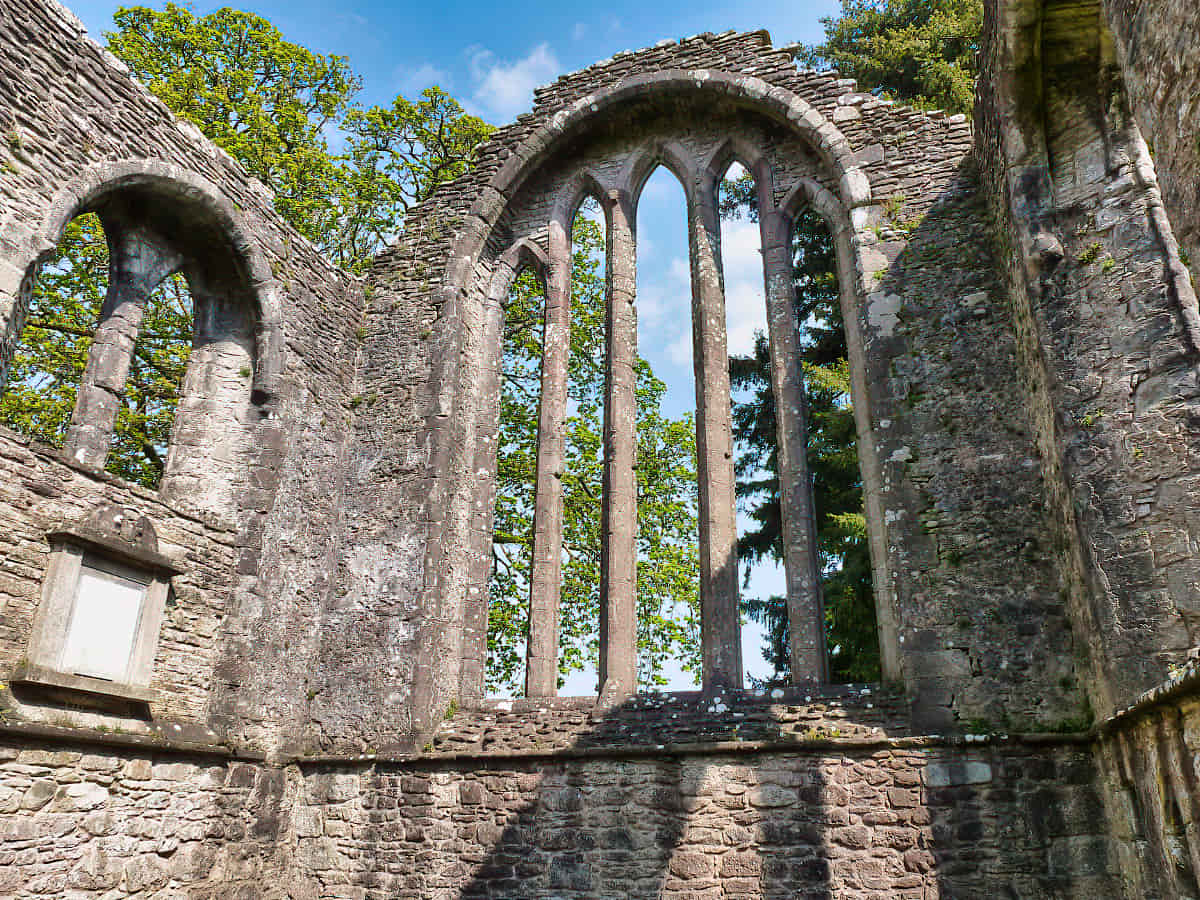
The Highlights
1: Due to its location, Inchmahome Priory is one of the more unusual historic sites in Scotland. In addition, the boat ride to the island is enjoyable in its own right.
2: The priory is set in an incredibly scenic setting that has been left just as it was when it was in use 300 years ago. The priory is an interesting ruin, but the island is the real star of the show.
3: There are lots of wildfowl on the Lake of Menteith, so it’s a great place for bird watchers and photographers. Binoculars (link to recommended optics) are essential to make the most of your visit.
Visiting Tips
1: Be aware that the island is not open in winter, so it’s best to check the Historic Environment Scotland website before setting off for the latest times.
2: If it’s a warm day, take a picnic, but remember to take your rubbish home with you. There are several spots on the island that are ideal for a picnic both inside and outside of the priory.
3: Looking for an outdoor attraction after a visit to Inchmahome Priory? The Bracklinn Falls are just six miles away.
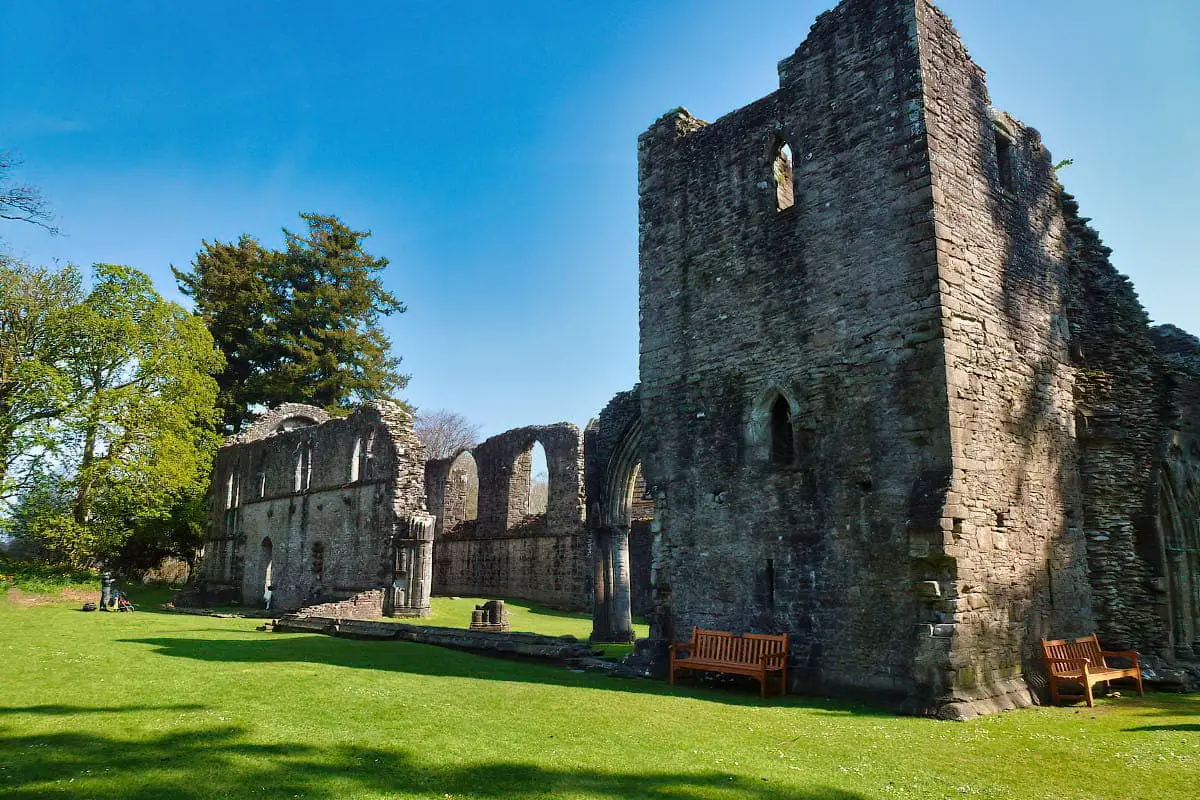
Tourist Information
Although Inchmahome Priory is located on a fairly small island, it’s big enough that you can spend several hours exploring it, and there’s a fair amount of wildlife to keep an eye open for as well.
Visits to the island are only possible with the small ferry boats that transport tourists to and from it at regular intervals, which is an interesting trip as there are lots of birds to watch as the boat motors its way across the lake.
When you get to the island, you’ll be in for a treat if the weather’s nice as it’s exceptionally pretty, and not only is there the ruined priory to explore but there’s also a thick woodland that surrounds it.
While there aren’t any designated footpaths, there are several open clearings that have been trodden down by fellow visitors so you can venture quite deep into the woods, although HES does ask that you minimise noise so you don’t disturb the wildlife.

Wildflowers are abundant in spring and summer, and even in the autumn it’s a lovely place, with the woodland changing from a deep and rich green into varied hues of brown and red. Spring is possibly the nicest time to visit as you’ll see lots of birds making their nests on the island, though visitors are asked to keep their distance from nesting birds sitting on clutches of eggs.
The old priory is really just a collection of ruined walls, although some of the intricate carvings in the stonework can still be seen. As this is a Historic Environment Scotland site, there are plenty of information panels dotted around so that you can learn about the priory’s history and the role it played as a religious sanctuary for over 300 years.
If you just want to enjoy the setting, you’re in luck, as there are a few benches installed in the grass areas that are perfect for sitting in the sun with a good book. I honestly can’t think of a more peaceful reading location in all of Scotland.
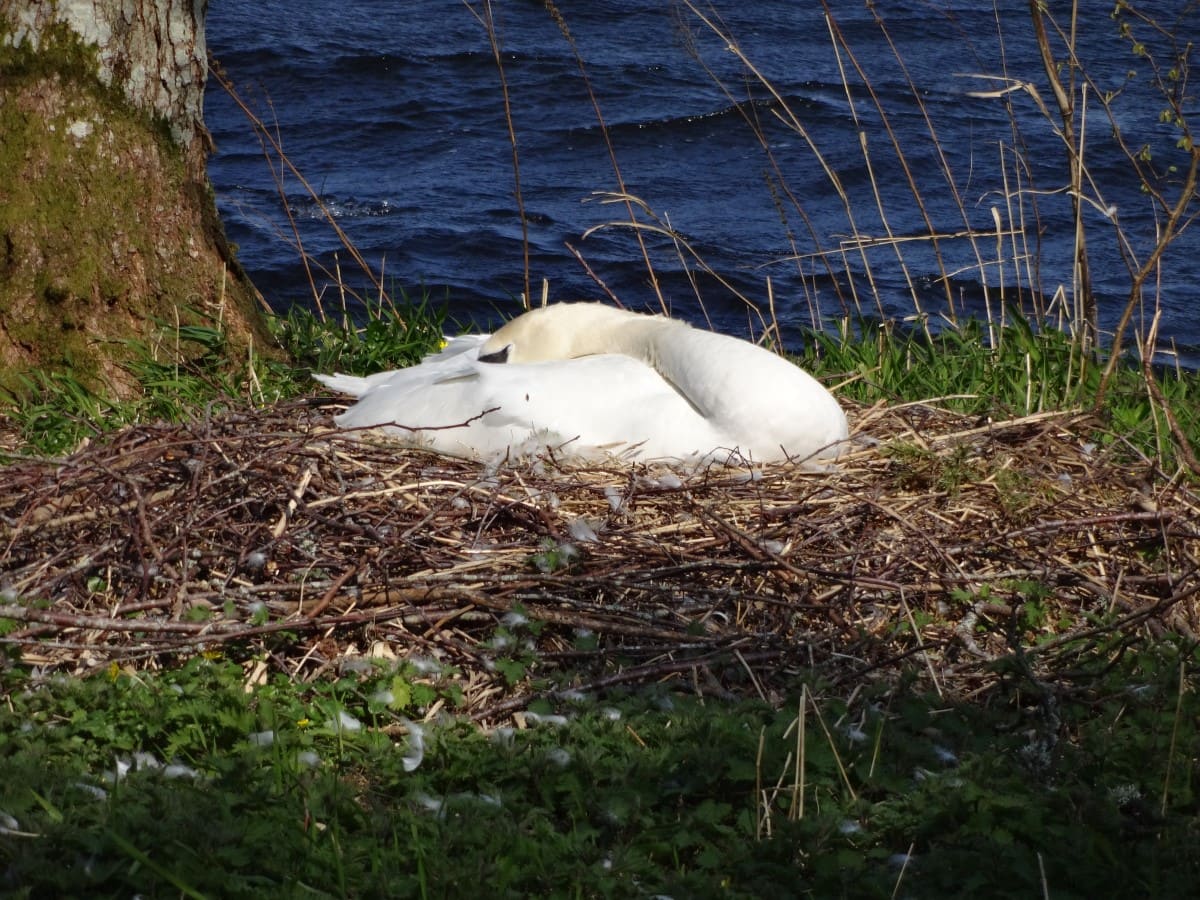
History
The Earl of Menteith, Walter Comyn, founded the priory in 1238 for an order of Black Canons who lived on Inchmahome until the monastic orders started to decline in Scotland during the 16th century. While the island that the priory is situated on is the largest on the lake, there are two others of similar size that were owned by the Comyn family, one of which, Inch Talla, was home to the Comyn family estate.
Like many priories and monasteries in the 16th century, Inchmahome gradually fell into decline after the Scottish Reformation as there were no new priests being ordained, and without a purpose to serve, it was no longer deemed worthy of maintenance and repairs.
As the walls of the priory began to give way, the land was sold several times, first to the Erskine family and then to the Duke of Montrose. Finally, in 1926, it was handed over to the nation as a site of historical importance, and it’s now managed by Historic Environment Scotland.
If you’d like to visit another historic attraction that’s off the usual tourist routes, I highly recommend Crichton Castle in Midlothian, or if you’d prefer somewhere in the area, you might like Ben Ledi, Bracklinn Falls, or Doune Castle.
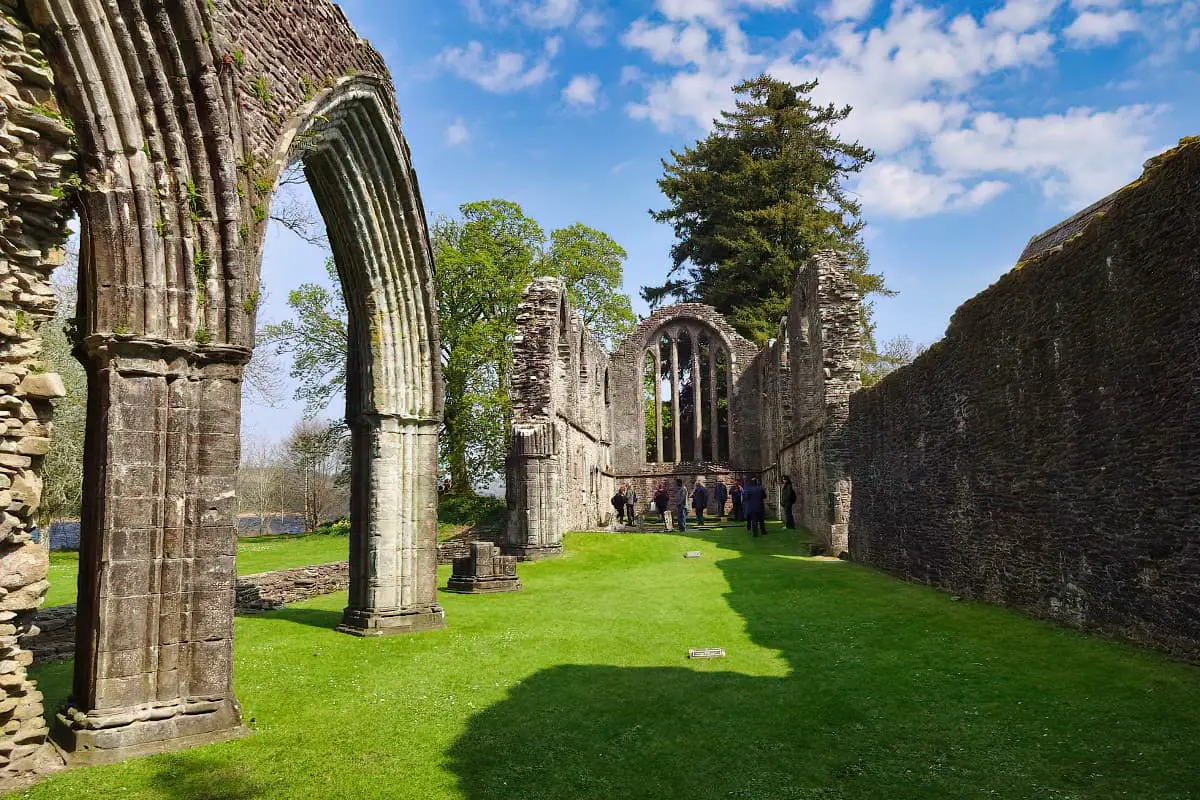
Things to Do
Take a Boat Trip to the Island: The priory is located on an island in the middle of the Lake of Menteith, which can only be accessed by boat. At just over 1/2 mile, it’s not a long trip by any means, but it’s a nice adventure in itself, and I guarantee younger children will have a great time.
Explore the Ruins: The main attraction of Inchmahome is the ruins of the priory. This remnant of a 13th-century Augustinian monastery is fascinating to walk around, so if you have even the remotest interest in Scottish history, you’ll have an enjoyable experience.
Enjoy a Picnic Amid Nature: The peaceful surroundings of the priory make it an ideal location for a relaxing picnic. There are plenty of spots around the island where you can sit on the lawn with your cheese and pickle sarnie and take in the stunning views, as well as a couple of bench seats near the priory ruins.
Birdwatching: The island is a haven for a variety of bird species. Take your binoculars (link to binocular reviews), as you’ll see waterfowl year-round, though it’s best to keep to the paths to avoid disturbing any nesting birds.
Tree and Plant Spotting: The island is home to a wide variety of trees and plants, including some unusual specimens like the boxwood bower, an evergreen shrub that Mary Queen of Scots allegedly planted. Take a leisurely stroll through the woods and try to identify as many species as you can.

Things to Do Nearby
Blair Drummond Safari Park. Blair Drummond, Stirling FK9 4UR, 18-minute drive.
a wildlife safari park that includes animal enclosures, a boating lake, a children’s play park, and bird of prey displays. Briarlands Farm petting zoo is located behind the safari park.
Bracklinn Falls. 17-minute drive.
The forest surrounding Callander offers superb walks on rough paths that extend throughout the wooded area. The Bracklinn Falls are a series of natural waterfalls that can be seen both from the banks of the Allt a Choire Bhric river, and there is a purpose-built wooden bridge in the heart of the forest.
Doon Hill and Fairy Knowe. Aberfoyle FK8 3XF, 14-minute drive.
A popular circular walking route in Queen Elizabeth Forest Park is reputed to be home to fairies. The route passes woodland, open countryside, and the River Forth.
Lodge Forest Visitor Centre. Aberfoyle, Stirling, FK8 3SX. 10-minute drive.
A large visitor centre that is the starting point for a variety of walks into Queen Elizabeth Forest Park. The centre features a café, a visitor information point, toilets, and a car park.
Loch Ard, Aberfoyle, Kinlochard, FK8 3TL. 15-minute drive.
a freshwater loch in the middle of the forest that is easily accessed via the B829. Loch Ard is frequently used by small sailboats, and there is a footpath that allows walkers to explore the perimeter of the loch in around 2 hours.
Frequently Asked Questions
How deep is the Lake of Menteith?
The Lake of Menteith is one of Scotland’s most shallow bodies of water, with an average depth of about 1.5 metres, or about 5 feet. The maximum depth, however, is a bit deeper, reaching approximately 7 metres, or about 23 feet.
Can you walk around Lake Menteith?
There is no dedicated footpath around the Lake of Menteith. The lake does, however, have a number of lochside picnic areas.
Who owns Inchmahome Priory?
Walter Comyn, the Earl of Menteith, initially established Inchmahome Priory in 1238. Historic Environment Scotland is currently in charge of managing and owning it.
Why is Lake Menteith not a loch?
The Lake of Menteith was called the Loch of Menteith until the 19th century, when Victorians changed the name to reflect its flat surrounding landscape, which is unlike other lochs in Scotland.

